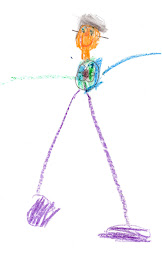Some of you may remember Marge McGaughey from West
Bluff Christian in Peoria. Marge was the moving force at West Bluff, a
creative, highly motivated woman, a devoted Christian. My husband, Jim, often
said that if the Disciples church had nuns, Marge would be one of them.
Over the decades that I knew her, Marge taught me many
things. One repeated lessons was: When you give to God, you get all that back
and more.
I must admit that the lesson didn’t sink in at the
time. We had children to raise and there never seemed to be enough money to go
around. Tithing was out of the question. I was responsible for paying our bills each
month. It finally reached a point where I was afraid every month that the money
would not cover our expenses. Eventually I threw up my hands and told Jim, HE
would have to manage the family finances. I just couldn’t do it any more.
And, as in all things he did, he immediately took
charge and steadily got us on to a sound footing.
One of the first things he did was to begin tithing to
the church. I was flabbergasted! We could hardly pay our bills and here he was
going to give 10% to the church?!! It was downright breath-taking.
Every week he would make out that check and drop it
into the collection, and I would feel faint, knowing that things were sure to
be going from bad to worse.
But, you know, it didn’t happen that way. Slowly but
surely our finances improved. We didn’t win the lottery or fall heir to any big
pile of money. Jim just kept paying the bills and one day he was putting money
into savings.
Years later I took over the bills again, and I wrote
out those checks every week. I can’t say I was comfortable doing it. I wasn’t
an entirely cheerful giver. But I did it anyway, because I had finally learned
that when you give to God, you get back all that and more.



